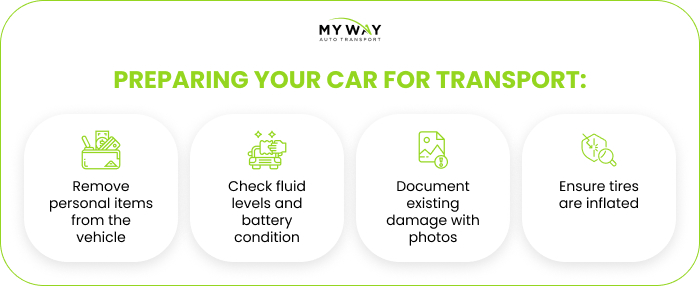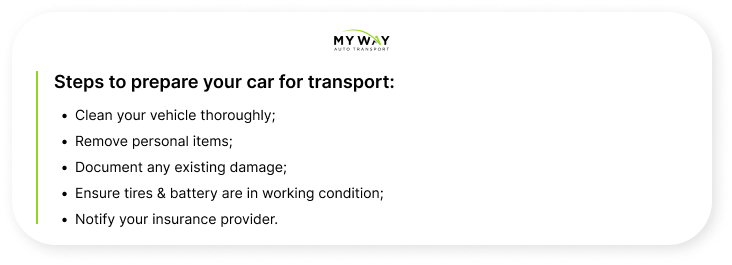How to Ship a Car Across State Lines: Understanding Costs and Rules

Moving a vehicle across state borders can feel overwhelming, especially if you’re new to the process. Between comparing prices, preparing your car and ensuring all legal requirements are met, there are many details to consider. Fortunately, with the right approach and a reliable transport partner, shipping a car doesn’t have to be stressful.
Key Takeaways:
- research car shipping rates across the country before booking;
- understand legal requirements & necessary documentation;
- compare affordable auto transportation options;
- choose between open & enclosed transport;
- decide on door-to-door vehicle transport or terminal auto shipping;
- prepare your car properly to avoid damage and delays;
- get a reliable car shipping quote from a reputable company.
Transporting a vehicle across state lines may seem complicated, but with proper planning, it can be a smooth process. Whether you’re moving a car to a different state, shipping cars out of state or exploring how to move a car to another state, understanding costs, rules and transport options is essential.

What are the average costs to ship a car to another state?
When planning to move your car to another state, one of the first questions that comes up is cost. The price of state to state transportation can vary significantly depending on multiple factors such as distance, vehicle size and the type of service you select. Knowing the average rates and what drives them helps you budget effectively and avoid unexpected expenses.
How much does it cost to ship a car?
Shipping a vehicle from state to state can vary widely depending on distance, vehicle type and chosen service. On average:
- short-distance state-to-state moves: $400–$800;
- long-distance or cross-country shipping: $1,000–$1,500;
- luxury or classic car transport may exceed $2,000.
Key resources like the auto transport blog provide updated insights on shipping costs for cars and tips to get accurate rates across the country.
Factors influencing the cost of shipping a car:
- Distance – longer routes increase fuel and labor costs;
- Vehicle type – SUVs, trucks and classic cars may cost more to transport;
- Transport method – open transport is cheaper, while enclosed transport is more protective but costs more;
- Seasonal demand – peak moving seasons can raise shipping costs for cars;
- Insurance & additional services – optional insurance and special handling will increase the total.
Finding affordable car shipping services
Finding affordable auto transportation requires research and comparison. Use resources like vehicle shipping company websites and request multiple quotes to identify cost-effective options.
Useful tips:
- book early to avoid last-minute surcharges;
- compare door-to-door vehicle transport & terminal auto shipping prices;
- consider reputable transport providers that offer transparent pricing.
What are the key rules for transporting a vehicle between states?
Beyond pricing, it’s equally important to understand the rules and requirements that apply when delivering cars out of state. Each shipment must comply with both federal guidelines and specific state laws, which means proper documentation and preparation are essential. Knowing the regulations ahead of time helps you avoid delays, penalties or unnecessary complications during the process.
Legal requirements for shipping a car across state lines
When transporting a vehicle across state lines, it is essential to follow both federal and state regulations. This includes ensuring your car has a valid registration, proof of insurance and meets any required emissions and safety standards in certain states. Additionally, you may be responsible for paying any applicable state taxes or fees related to the shipment.

Preparing your car for transport:
- remove personal items from the vehicle;
- check fluid levels and battery condition;
- document existing damage with photos;
- ensure tires are inflated.
Documentation needed when shipping a vehicle
Before shipping your vehicle, make sure to collect all necessary documents, including the vehicle title and registration, your driver’s license, proof of insurance and the bill of lading provided by the transport company. Having these documents prepared in advance helps streamline the state to state transportation process and reduces the risk of legal or administrative issues.
How can I choose the right auto transport company?
Selecting the right partner is one of the most important steps when planning state to state transportation. With many providers on the market, it’s crucial to separate reliable companies from those that may lack transparency or proper credentials. A trustworthy company not only ensures fair pricing but also provides peace of mind by handling your car with care, offering clear communication and meeting delivery expectations.
A reputable vehicle shipping company will offer:
- transparent car shipping rates across country;
- licensed & insured services;
- positive reviews & testimonials;
- multiple shipping options (open, enclosed, door-to-door, terminal).
Questions to ask auto transport companies
Before booking with an auto transport company, it’s important to ask key questions to ensure you understand the service and avoid surprises. Inquire about the total cost to transport a car from one state to another, estimated transit time and delivery windows, the details of insurance coverage and the claims process, as well as available tracking options during shipment. These questions help you select a reliable company and plan your move with confidence.
Reading reviews & ratings of services
When choosing a shipping service, it’s essential to read reviews and ratings from previous customers. Check trusted platforms and the auto transport blog for verified feedback, which can provide insights into a company’s reliability, punctuality and overall quality of customer service. This helps you make an informed decision and select a provider you can trust.
What are the different delivery methods available for car transport?
When arranging shipping auto cross country, one of the biggest decisions you’ll face is choosing the transport method that best fits your needs and budget. Each option comes with its own benefits and trade-offs — whether it’s balancing cost versus protection or convenience versus flexibility. Understanding the differences between open and enclosed transport, as well as door-to-door versus terminal auto shipping, will help you make an informed choice and ensure your car is shipped safely and efficiently.
Open vs. enclosed car transport: which is better?
When deciding between open and enclosed car transport, consider your vehicle type and protection needs. Open transport is more affordable and works well for standard vehicles, while enclosed transport offers maximum protection, making it ideal for luxury or classic cars.
Door-to-door vs. terminal-to-terminal shipping
When choosing between door-to-door and terminal-to-terminal shipping, consider convenience and cost. Door-to-door vehicle transport delivers your car directly to your preferred location, providing maximum ease. In contrast, terminal auto shipping is generally more affordable but requires you to drop off and pick up your vehicle at designated terminals.
Understanding insurance coverage during transport
It’s important to understand insurance coverage when shipping a vehicle. All reputable carriers include insurance for transported cars, but you should confirm the coverage limits and consider purchasing additional insurance for high-value or specialty vehicles to ensure full protection during transit.
How long does it take to ship a car across the country?
Timing is a crucial factor when planning to ship cars out of state. Understanding how long your vehicle will be in transit helps you coordinate schedules, plan for availability and set realistic expectations. Transit time depends on several factors, including distance, transport method, seasonality and carrier availability. Being informed about average shipping durations and the steps involved ensures a smoother experience from pickup to delivery.
Factors affecting shipping time for car transport:
- distance between origin & destination;
- transport method (open or enclosed);
- seasonal traffic or weather conditions;
- availability of carriers.
Average transit times for vehicle shipping
Typical transit times vary depending on distance and other factors. Short-distance, state-to-state moves usually take 1–3 days, while cross-country shipments often require 5–10 days. Keep in mind that longer transit times may occur during peak seasons due to higher demand.
What to expect during the process
During the vehicle shipping process, you can expect several key steps to ensure a smooth and secure transport. First, the carrier will confirm the pick-up appointment. Next, your car will undergo a thorough inspection and documentation of its condition. Throughout transit, many companies provide tracking updates via GPS or customer notifications so you can monitor your shipment. Finally, upon arrival, the vehicle will be delivered and a post-shipment inspection will be conducted to confirm its condition.
What should I do before shipping my car to another state?
Proper preparation is key to ensuring a smooth and stress-free state to state transportation experience. Taking the right steps before your vehicle leaves — such as cleaning, documenting its condition and confirming insurance — helps prevent damage, delays or misunderstandings. Additionally, knowing how to get an accurate car shipping quote and what to check before handing over your vehicle ensures your shipment goes as planned and gives you peace of mind throughout the process.

Steps to prepare your car for transport:
- Clean your vehicle thoroughly;
- Remove personal items;
- Document any existing damage;
- Ensure tires & battery are in working condition;
- Notify your insurance provider.
How to get a car transport quote?
Request a car shipping quote from multiple providers to compare prices. Use online forms or contact vehicle shipping company representatives for accurate estimates.
What to check before handing over your vehicle?
Before handing over your vehicle for transport, it’s important to carefully check several details. Inspect the vehicle’s condition and take photos for documentation, review the bill of lading to ensure all information is accurate, confirm your insurance coverage and verify the scheduled pickup and delivery times. Doing so helps prevent misunderstandings and ensures a high level experience.
Request an instant quote in under 2 minutes
Contact us for a custom delivery quote.
Frequently Asked Questions
Using open transport and terminal auto shipping is usually the most cost-effective method. Booking in advance can also reduce rates.
Yes. Cleaning your vehicle allows for accurate inspection and protects against hidden damage claims.
A licensed and insured vehicle shipping company ensures your car is transported safely and efficiently.
There are several strategies to save money when shipping a car. Start by comparing multiple car quotes to find the best rate. Opt for open transport, which is generally more affordable than enclosed options. Scheduling your shipment during off-peak seasons can also reduce costs and choosing terminal auto shipping instead of door-to-door delivery may offer additional savings.